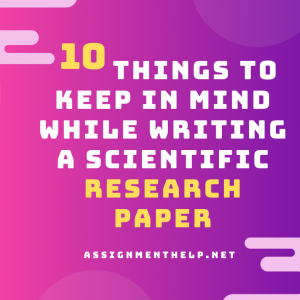5 Tips to Ace your Research Presentation
Academic paper presentations meant for faculty or your fellow researchers and graduates are often termed as ‘internal presentations’. These presentations are considerably different from those given daily in business meetings, and for this reason the former have different pressure points than the latter. The internal presentations are all about you as a researcher, expressing your academic viewpoint to your peers while outlining your research agendas. Through this blogpost I would like to list out some classic research presentation mistakes that students make. However, this post does not delve into the mistakes that people make while preparing these presentations. For that I’ll do another post in future on “How not to make a boring presentation”

- Presenting your research paper instead of your research presentation.
Most often students take the meaning of a research presentation as a reading session for their research paper. This way they end up providing a lot more unnecessary, boring and painful concepts, definitions and details that can be easily avoided. The presentation seems like an endless parade of slides depicting irrelevant statistics, facts, and concepts, definitions which make no sense to the audience, leaving them either bored or simply confused. In all of this the main research problem and argument gets lost. Such a presentation ends up depicting you more as a confused person who cannot mine out essential details and pitch the main arguments clearly. This ends up making you look unprepared, tangled and lost in the web of your concepts, lacking any fruitful dimension.
- Racing through the Statement of Purpose
Research students, many a times, are so excited to get to the data and findings portion that they end up omitting the details on the statement and explanation of the research problem itself. The details on the pertinence of the research matter as much as your findings. If your peers do not understand the problem you are tackling or in fact why you are doing it in the first place, then chances are that they would not be able to grasp the implications of your work. Also a closer problem is when students choose to omit the implication portions of their research. The data exercises, findings and conclusions are just plain, bland English statements unless you establish the context. Unless the result is interpreted in terms of what it means for the subject, how it will serve the existing or future research, which industry will benefit from it; it is just another paper in the sea of thesis. Establishing the role of your findings, their appropriateness and usefulness to the existing field is as important as the research process itself. It serves to highlight the underlying thought process by which you reached and formulated your own research question. It also opens scope for furthering your research on an industry wide scale by highlighting certain open questions. While people try to complete their research papers, it is in fact most important to leave it with an open question to maintain a research scope.
- Endless Theory, no empirics
Balancing the right amount of theory and literature survey is a task of walking on thin rope. Too less theory can take away the actual substance from your paper while too much theory makes it look like you put in everything you could google on the last day. Many times students devote over 50% of their presentation time in only explaining the underlying theory of their research. While they may do a good job in presenting the story, the overall presentation becomes lackluster. This takes away the essential time that should be spent on talking about your own research; the experience, the practices, the finding and their implications. In front of an academic audience and peers, a common level of theoretical understanding and foundation must be assumed, they are in fact going to know all your arguments. In such a condition, all you do is to endlessly reiterate your theory and existing literature then you come across as being unsure of your research and lacking confidence in your findings yourself. Remember, it’s not a session to defend your research proposition, you are way past that stage. It’s a presentation to put forth your research, your conclusions and how is it going to impact the future of your subject.
The theory is thus best tackled in a short, precise, crisp manner. Further theoretical details are best delved into if at all anyone interjects you in the question hour. Tackling them in detail at that time would make you look smarter and confident.
- Reading right from your research paper
There is a difference in the tone in which a research paper is set and in the one used for presenting your paper. Reading your text from the research paper itself makes you look unprepared. It often gets you entangled in the most unnecessary details. This is what takes away the preciseness and directionality of the research presentation. It is important to take time out and prepare your verbal explanation well in advance. Reading text straight out of paper might even get you confused as the brain will start working critically on the visual text as well. Most likely you will end up coming across as nervous and defensive and worst, amidst the presentation you might become the devil’s advocate of your own research.
- Unprepared for Viva/Question hour
While most students come thoroughly prepared to deliver a smooth, rehearsed presentation, even the most skilled ones can fail during the viva time. A good question round performance depicts your performance off – guard and establishes your understanding, and conceptual clarity along with an ability to understand the application of your research. Most judging panels and academicians often like to test the presenters with harsh, tricky questions, sometimes even tangential to the presentations. At times the question is framed in such a convoluted manner that the real essence can’t be understood. Sometimes even the simplest question can hit your nerves if it’s delivered in a stern, belittling tone. It’s best to remain calm and take a good time in answering the question. Do not try to answer instantaneously, its best sometime to even right the questions and keywords to get the clear understanding of what the person wants to know really. Often most lengthy, twisted question have the most straightforward answers. It’s a good idea also to circulate your paper in advance to some of your peers and invite their queries/comments/ feedbacks.
We would love to hear what research presentation mistakes would top on your list and what’s your plan to rectify them!


